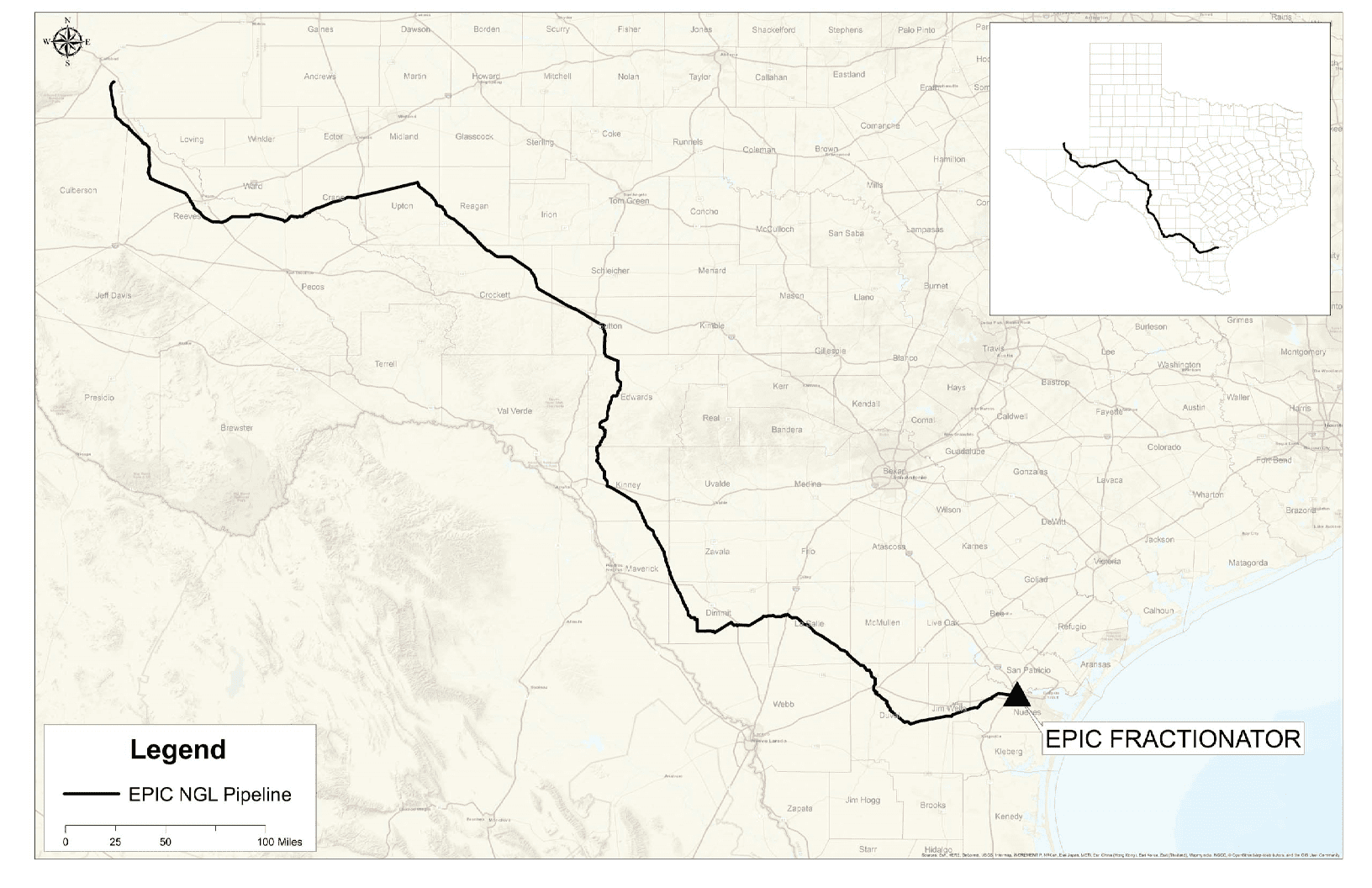Construction has begun on the first phase of the EPIC NGL Pipeline project. The 650-mile EPIC NGL Pipeline runs from Southeast New Mexico to Corpus Christi. When complete in early 2019, the EPIC NGL Pipeline will have throughput capacity of at least 375,000 barrels per day with multiple origin points in the Delaware and Midland Basins.
Destinations include interconnects near Orla, Benedum and Corpus Christi, Texas, where EPIC’s affiliate plans to build a fractionation complex to accommodate the pipeline’s volume. In addition to the fractionator, EPIC will be building purity pipeline systems, including an ethane system which in the first phase will span the upper Gulf Coast into the Markham area for the 1st phase.
“The EPIC Y Grade Pipeline provides an efficient solution to shippers’ NGL marketing and transportation needs”, says Justin Gordon, EPIC’S Senior Vice President of Engineering and Operations. “Our pipeline will be an NGL “Superhighway” providing customers’ volumes from the Permian Basin to Corpus Christi and will better serve the growing needs of the petrochemical and refining sectors along the U.S. Gulf Coast.”
EPIC plans to have the initial phase of the pipeline in-service in early 2018. As mentioned in September, BP has signed on as the anchor shipper and a capital commitment was secured from funds managed by ARES Management, L.P.
The EPIC NGL Pipeline will run side-by-side through Texas with the previously announced EPIC Crude Oil Pipeline for most of the route.
Oil and gas operations are commonly found in remote locations far from company headquarters. Now, it's possible to monitor pump operations, collate and analyze seismic data, and track employees around the world from almost anywhere. Whether employees are in the office or in the field, the internet and related applications enable a greater multidirectional flow of information – and control – than ever before.











